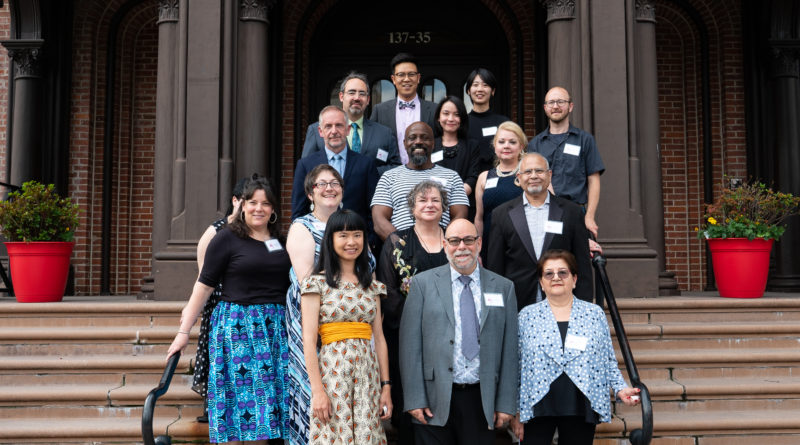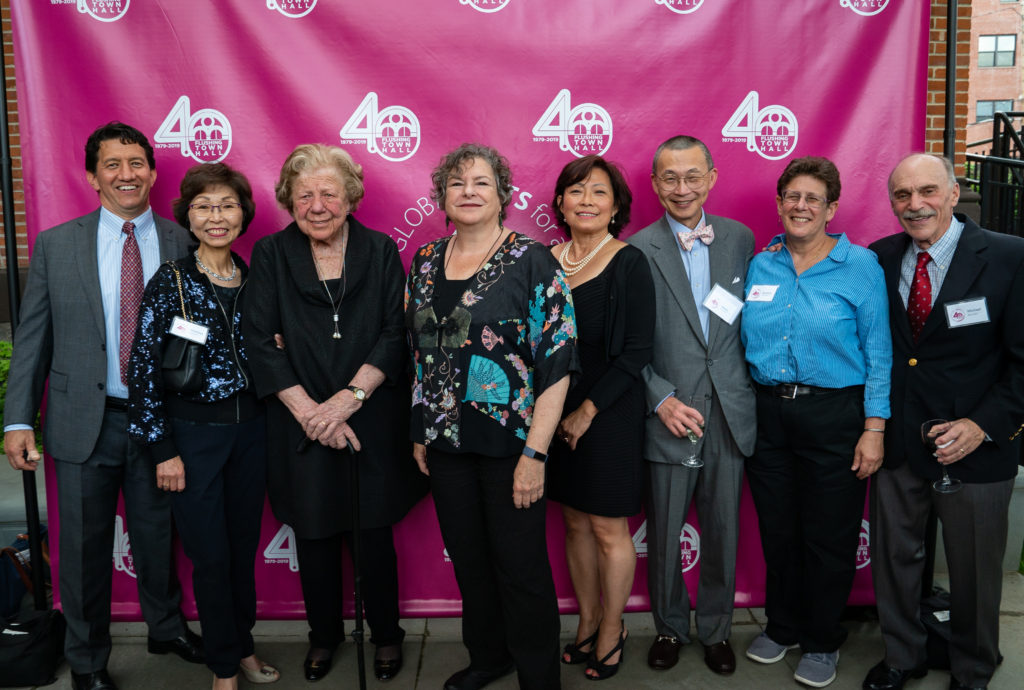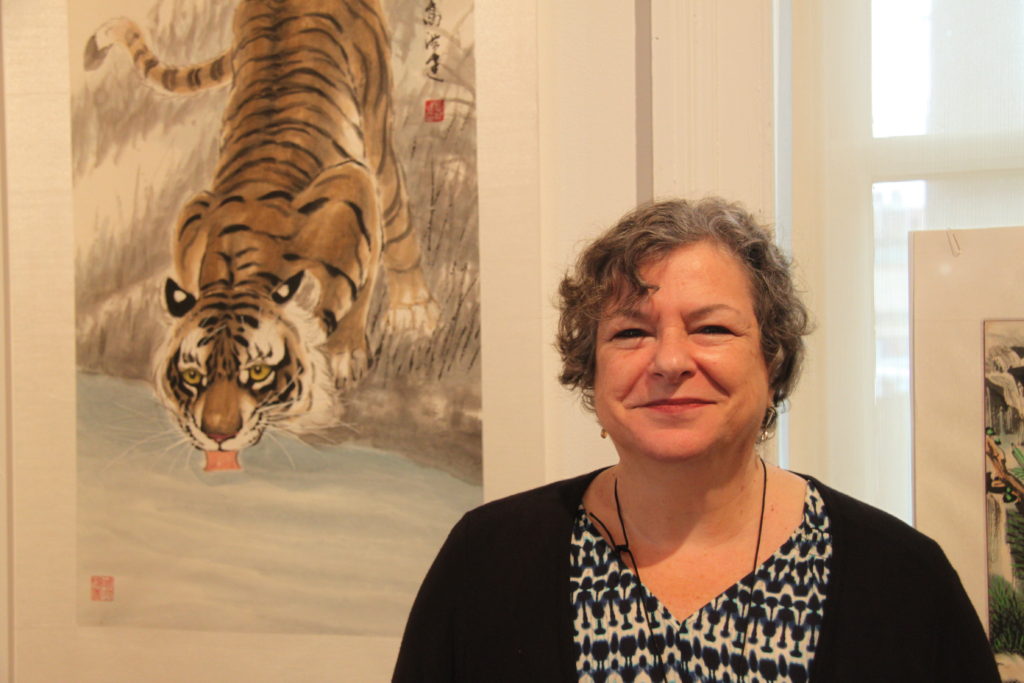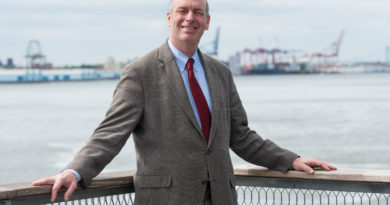Flushing Town Hall still bringing people together
Cultural institution celebrates 40 years of art and culture
BY BENJAMIN FANG
When Flushing Town Hall was built in 1862, it was erected to send off and welcome back Union soldiers fighting in the Civil War.
Thousands of conscripts from throughout Long Island, including the village of Flushing, were sworn into the Union Army in the building’s assembly hall upstairs.
“My understanding is that when soldiers left New York to go and fight in the South, there was no formal send-off place or welcome-back-home location,” said Ellen Kodadek, executive and artistic director of Flushing Town Hall. “So the town fathers at the time said, ‘we need a town hall.’”
Over the next century, the Romanesque Revival-style edifice was used for a variety of purposes. It was used as a venue for light opera and traveling theatrical productions, and for close to six decades in the 1900s, it served as a courthouse and a jail.
While the lobby had a bank branch, the upstairs portion was still used as a town hall for community meetings.
At some point, it was leased out to a private owner, which is when it started to really “fall into disrepair,” Kodadek said.
Despite its protected status granted by the Landmarks Preservation Commission in 1967 and the National Register of Historic Places in 1972, Flushing Town Hall still “suffered extensive neglect” for the better part of two decades, according to the organization’s website.
That’s when the city stepped in. Former Borough President Claire Shulman, Community Board 7 and other local groups spearheaded an effort to save the building.
In 1990, Justice Phyllis Flug of the Queens County Supreme Court issued a ruling that the facility would be given back to the city. That allowed Shulman to begin the process of choosing a nonprofit to manage the dilapidated structure.
They chose the Flushing Council on Culture and the Arts (FCCA), an organization that was founded in 1979 and operated out of a storefront in Downtown Flushing.
“The organization was very involved in some major festivals and Flushing Meadows-Corona Park,” Kodadek said. “In the first decade, Flushing Council partnered with around 50 Queens arts-based organizations.”
Under the leadership of founding executive and artistic director Jo-Ann Jones, FCCA moved into the building on Northern Boulevard and began its nine-year, $8 million renovation.
The abandoned eyesore was transformed into a visual and performing arts center. The first-floor galleries and performance space opened to the public in 1993, followed by the second-floor theater hall in 1999.
“We’re now mandated to operate it, program it and steward it on behalf of the city of New York, which owns the building,” Kodadek said.
In 1996, Flushing Town Hall was added to the city’s Cultural Institutions Group. All CIG members, including Carnegie Hall, Lincoln Center and the Queens Museum, operate out of city buildings and are a line item in the city budget for operating support.
Throughout its history, Flushing Town Hall, which is now synonymous with FCCA, has stayed true to its mission: to bring people together by presenting arts and culture from around the world.
The organization has an extensive arts and education program. According to Kodadek, the Education Department served 22,000 children and families last year alone.
Employing roughly 30 teaching artists, all of whom are “masters” of different cultural traditions or disciplines, Flushing Town Hall brings performers and touring artists, often from overseas, to perform.
School groups come from not just the five boroughs, but also Long Island, New Jersey, Connecticut and all over the metropolitan area.
Flushing Town Hall also has an extensive jazz history, including launching the Queens Jazz Orchestra in 2008. That is led by Dr. Jimmy Heath, an NEA Jazz Master, longtime Queens resident, and a contemporary of jazz legends Louis Armstrong and Dizzy Gillespie.
“We were actually presenting jazz before there was jazz at Lincoln Center,” Kodadek said. “We present jazz throughout the year, both emerging artists and artists that are more recognized now.”
One of the institution’s most popular series is called “Global Mashups,” which brings together musicians from entirely different cultures. The night starts with a dance lesson while each band plays separately. In the final set, all of the bands, which have never met before, jam together.
“They have to navigate that musical conversation in the same way that you do when you meet someone for the very first time,” she said. “It’s a lot of fun.”
In her role as artistic director, Kodadek’s job is to make sure all of the programming has an arc that makes sense. It has to fit on their stage and be affordable, relevant, impactful and creative.
The programming has to tie back to the group’s mission of bringing people together. That’s why Flushing Town Hall organizes a lot of cross-cultural programs.
One example is an exhibit two years ago in February, when Lunar New Year landed on the same day as Valentine’s Day. Calling it “Lucky in Love,” Kodadek and her team showcased wedding attire from different cultures loaned by community members.
They had dresses, suits, accessories and accoutrements from different parts of China, Japan, Korea and India.
“It was really beautiful and remarkable,” she said. “The generosity of the community, to loan us some of their most precious objects, was great.”
The curators also learned a lot from the exhibit. For example, Shawn Choi, Flushing Town Hall’s director of Marketing and Community Engagement, loaned the clothes he and his wife wore at their own wedding.
From their contribution, the organizers learned of a Korean tradition where the groom’s mother throws chestnuts at the bride during the ceremony. The bride catches them in her dress, and the amount she catches symbolizes the amount of children they’re going to have, according to Kodadek.
“So it’s all about longevity and good luck,” she said. “It was lovely to learn all about these traditions, which is very important to us.
“We really want to celebrate the diversity of people,” Kodadek added. “It’s really a great way to build community, for people to discover the creativity and beauty of different cultures that they may be completely unfamiliar with.”
In a borough as diverse as Queens, where close to 200 languages are spoken representing hundreds of cultures, it’s important that cultural institutions reflect, honor and celebrate that diversity, Kodadek said.
As the only multidisciplinary organization in the neighborhood, Flushing Town Hall has filled that role perfectly.
“Because we were built with this welcoming idea, to welcome back soldiers from the Civil War, it’s almost like it’s in the DNA of the building to be welcoming to people,” she said.
Kodadek also sees Flushing Town Hall as a space where people feel at home in the community. It brings together individuals from different cultural backgrounds, ages and genders to enjoy the arts.
“It could be a child who sees himself or herself represented on stage in a way they may have never experienced before, or someone who comes here, grappling with other issues, but they’re part of a community dancing, laughing and singing together,” she said. “By the end of the night, you don’t feel so much that you’re a stranger anymore.”
On June 6, Flushing Town Hall celebrated its 40th anniversary by honoring Shulman, who was given the “Jo-Ann Jones Award for Devoted Leadership.”
They also presented architect Emily Lin, a longtime supporter of the organization, with the “Howard Graf Award for Creative Design & Architecture.” Graf, a Jamaica-based architect, oversaw the building’s $8 million renovation project as chair of the FCCA.
When grappling with the question about the next 40 years of Flushing Town Hall, Kodadek said she’s focused on continuing both the organization’s stability and growth. That means expanding education services for thousands of students, keeping programs affordable for the community, and continuing to be a venue that brings people together.
“Everything for us relates back to our mission,” Kodadek said.





